Blogging for Small Businesses: How to Get Started (In 3 Steps)

[ad_1]
Starting a blog can be an effective way to keep customers interested in your products or services. However, you might be wondering what blogging for small businesses entails and how to actually set up your own blog.
Fortunately, starting a blog isn’t as complex as you might think. As long as you choose the right tools, you should be able to create a blog that draws new customers to your business and keeps existing readers engaged.
👉 In this post, we’ll discuss the benefits of blogging for small businesses. Then, we’ll show you how to start a blog. Let’s dive in:
The benefits of starting a blog for your small business
Whether you sell handmade products, offer professional services, or run a small shop, starting a blog can provide several benefits to your business. For starters, it can help you expand your audience and generate new leads.
By establishing an online presence, you’ll be tapping into a large base of internet users while also making your services more accessible. For example, anyone who wants to learn more about your business can read your blog and ask questions in the comments section.
Let’s say you’re a wedding organizer. You could use your blog to write about recent events that you’ve organized and showcase high-quality photos of the occasion.
Plus, with proper keyword research, you should be able to make your business more discoverable. As a wedding planner, you might target popular keywords such as “wedding planning advice” or “destination wedding tips:”
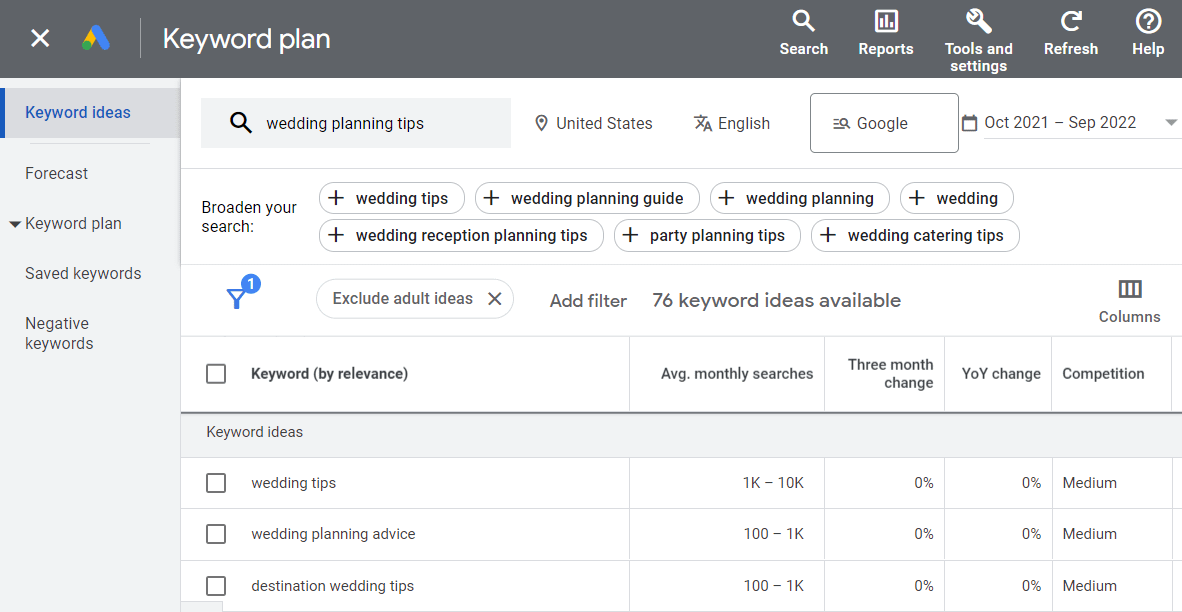
You could then write articles based on those search terms:
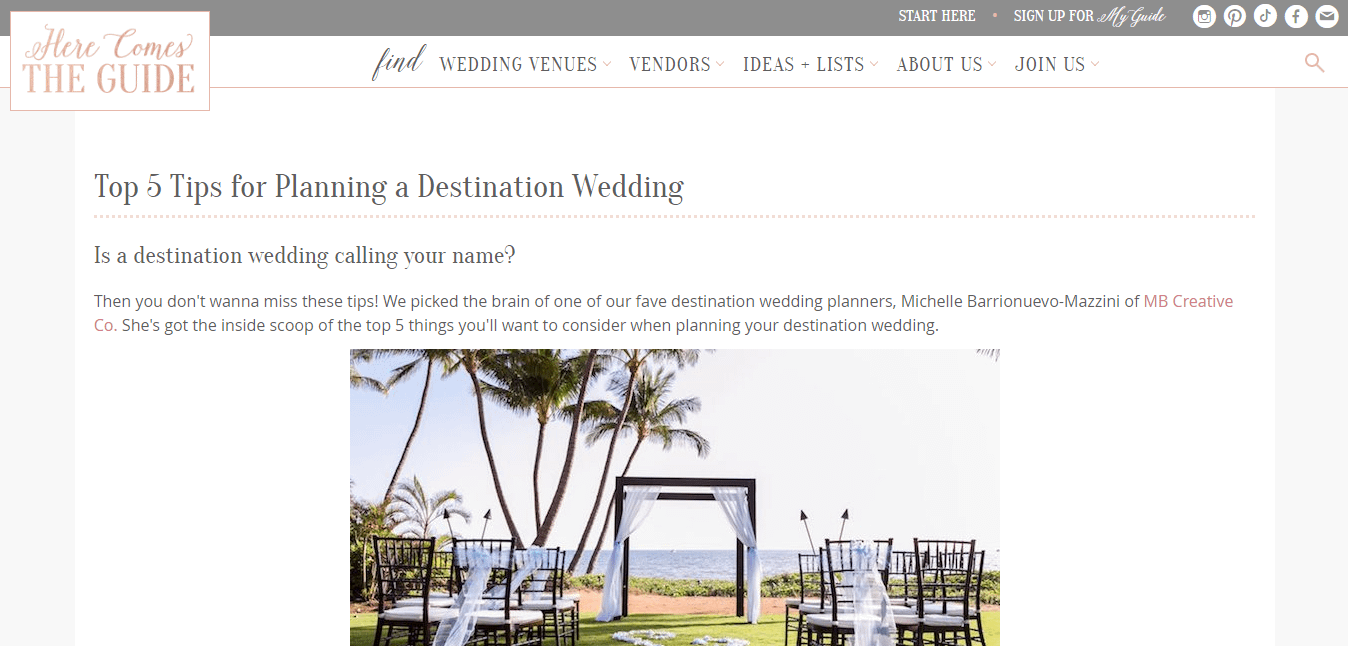
Furthermore, using Search Engine Optimization (SEO) techniques helps make your blog posts rank for relevant keywords in search engines and generate clicks to your site. This organic traffic is vital to your business’s growth. Users who come across your blog might then check out your online shop and services, make a purchase, or submit a query through your contact form.
Once you create a blog, it’s important to publish high-quality posts regularly. This frequency helps keep your site fresh and active, which might further boost your visibility in search engines.
Plus, producing high-quality content can help you establish authority in your industry. By populating your blog with informative articles, readers will see that you’re an expert in your niche and might be more inclined to use your services or purchase your products.
How to start a blog for your small business (in 3 steps)
Now that you know the benefits of blogging for small businesses, let’s look at 🔎 how to set up a blog in three easy steps:
- Step 1: Choose a web host and set up WordPress
- Step 2: Select a theme
- Step 3: Publish your first post
Step 1: Choose a web host and set up WordPress
The first step is to select a platform for your blog. There are several options to choose from, but we recommend opting for WordPress:

This Content Management System (CMS) was initially developed for blogging. It has since become one of the most widely used platforms, powering anything from large ecommerce sites and online shops to artist portfolios and personal blogs.
This means WordPress enables you to create a website that contains both a blog and an online shop. If you offer professional services, you might pair your blog with a testimonials page or portfolio:

The WordPress software is free. You’ll just need to pay for web hosting and a domain name. Many companies offer affordable starter plans, including Bluehost:

With Bluehost, you’ll get professional WordPress hosting for different types of websites, including blogs and online stores. The company also offers plans for small businesses. Packages include a free domain name for one year and automatic WordPress installation, so you can start working on your blog straight away!
Step 2: Select a theme
Once you set up WordPress, it’s time to start customizing your blog. You’ll want every aspect of your site to align with your existing branding. This continuity can help you build brand recognition and project a more professional image.
Fortunately, the WordPress Theme Repository includes a broad range of themes for different types of websites:

You can use the filters provided to narrow down your search. For instance, you might be looking for a theme that supports particular features, like custom colors.
If you plan to sell products on your blog, you’ll want to choose a theme with ecommerce functionality. For example, Neve is a multi-purpose theme designed for blogs, small businesses and startups, as well as online shops:
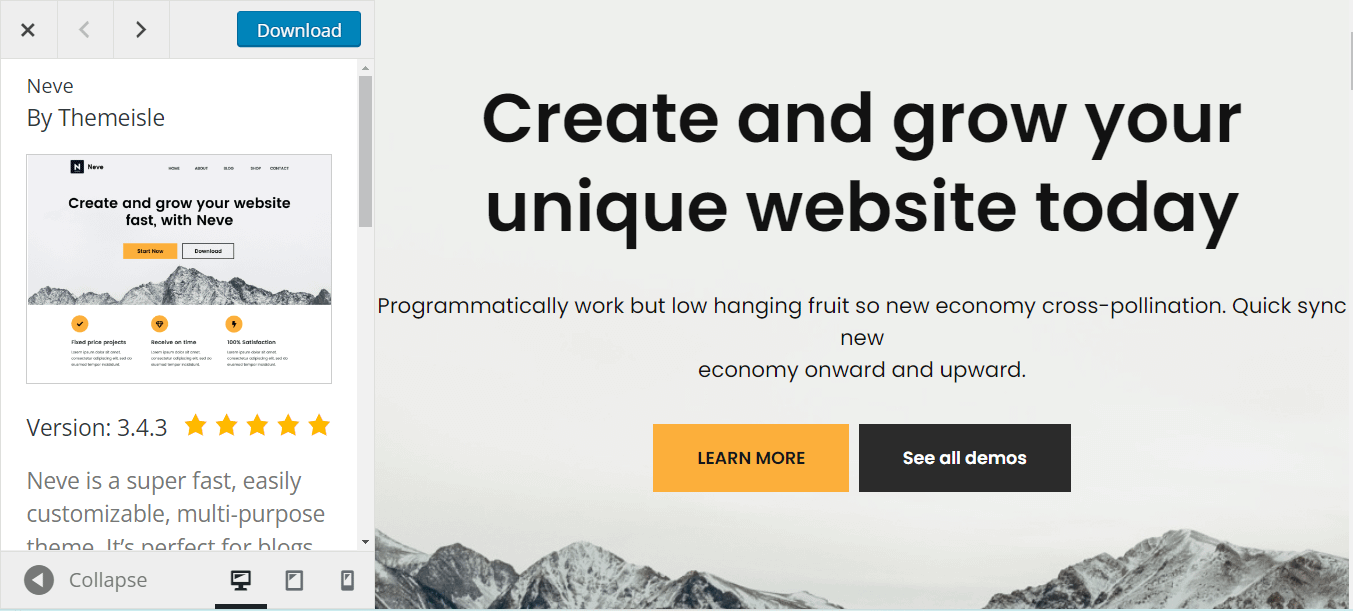
Neve is also suitable for creative portfolios and other projects. Plus, it’s fully compatible with WooCommerce, so you can easily run an online store along with your blog.
To select a theme, go to your WordPress dashboard and navigate to Appearance → Themes → Add New. Then, choose your preferred theme (or upload its .zip file if you purchased a premium theme) and click on Install, followed by Activate:
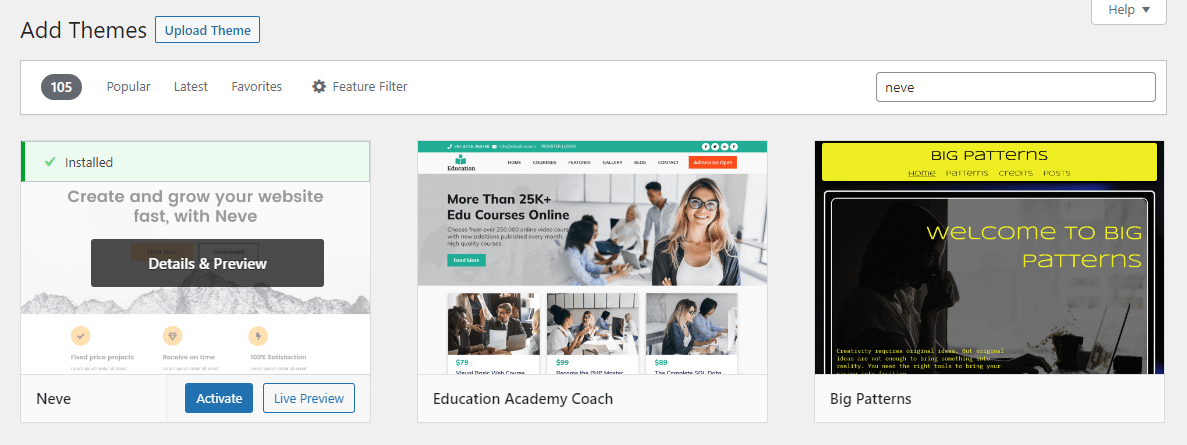
Once you’ve activated the theme, it’s time to start customizing it to suit your needs. To do this, go to Appearance → Customize. This will launch the Theme Customizer, where you can edit different aspects of your site, including the typography and colors:

When you’re ready, click on Publlish to make your changes live. Additionally, you have the ability to further customize your theme by installing a page builder. Neve is compatible with the most popular builders on the market, including Elementor and Beaver Builder.
All you need to do is navigate to Plugins → Add New and look for your preferred page builder plugin. Then, select Install and Activate:
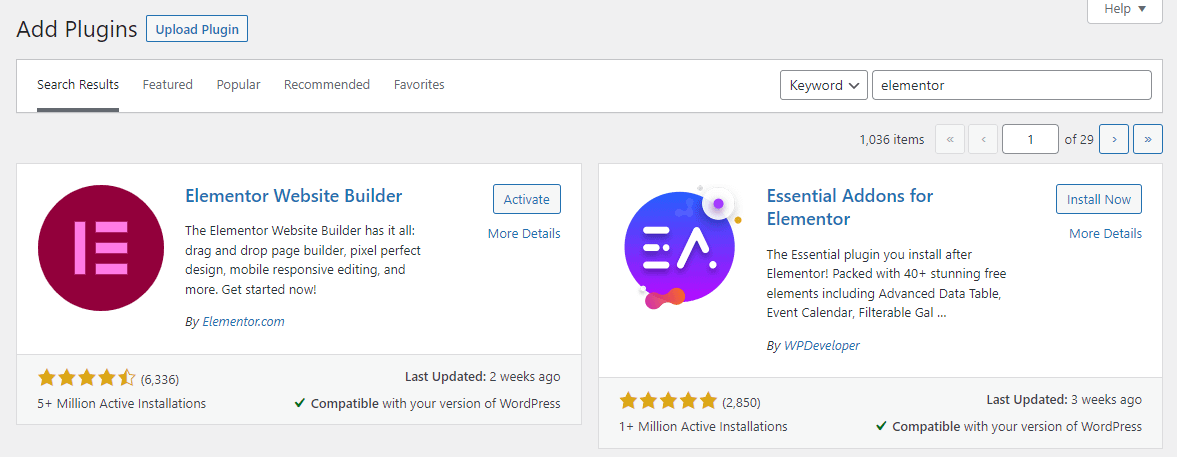
With a page builder, you can design almost every aspect of your business website. For instance, you might create a custom single post template for your blog. You could also use a page builder to customize your blog feed and archives.
Step 3: Publish your first post
After customizing your blog, it’s time to write your first post. To do this, click on Posts → Add New. This will launch the Block Editor:
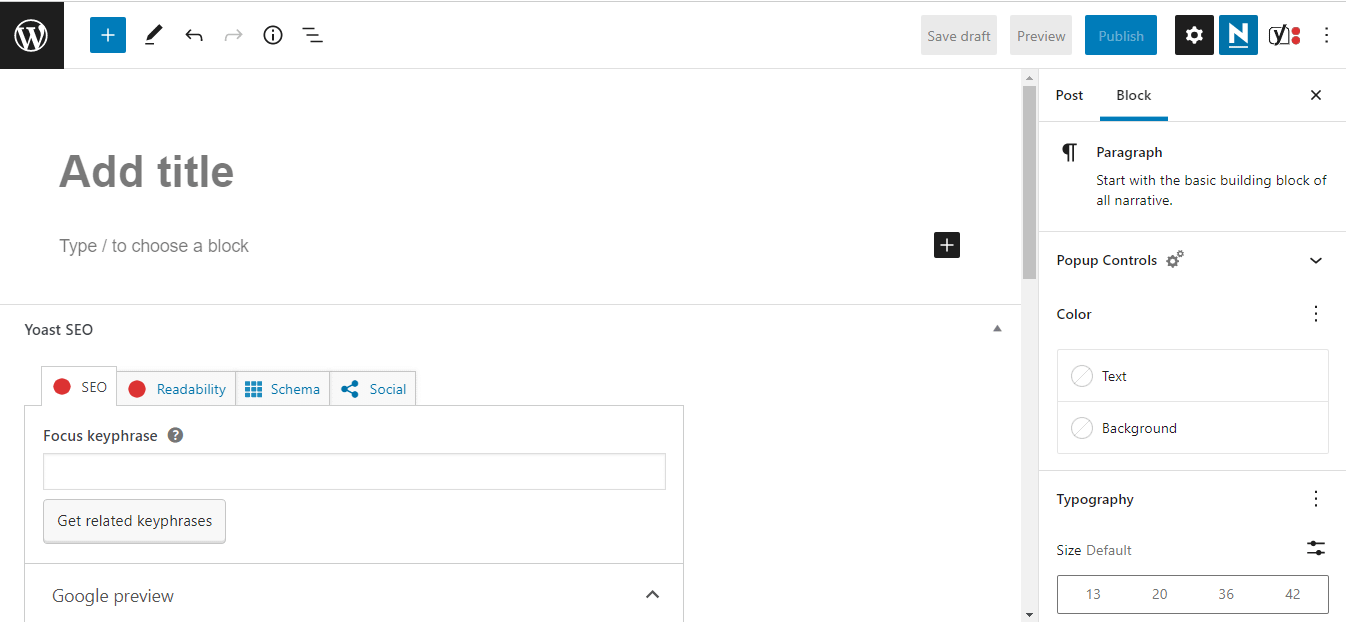
Add a title for your post, and start writing your content here. To add elements such as images, click on the plus sign (+) and select a block:
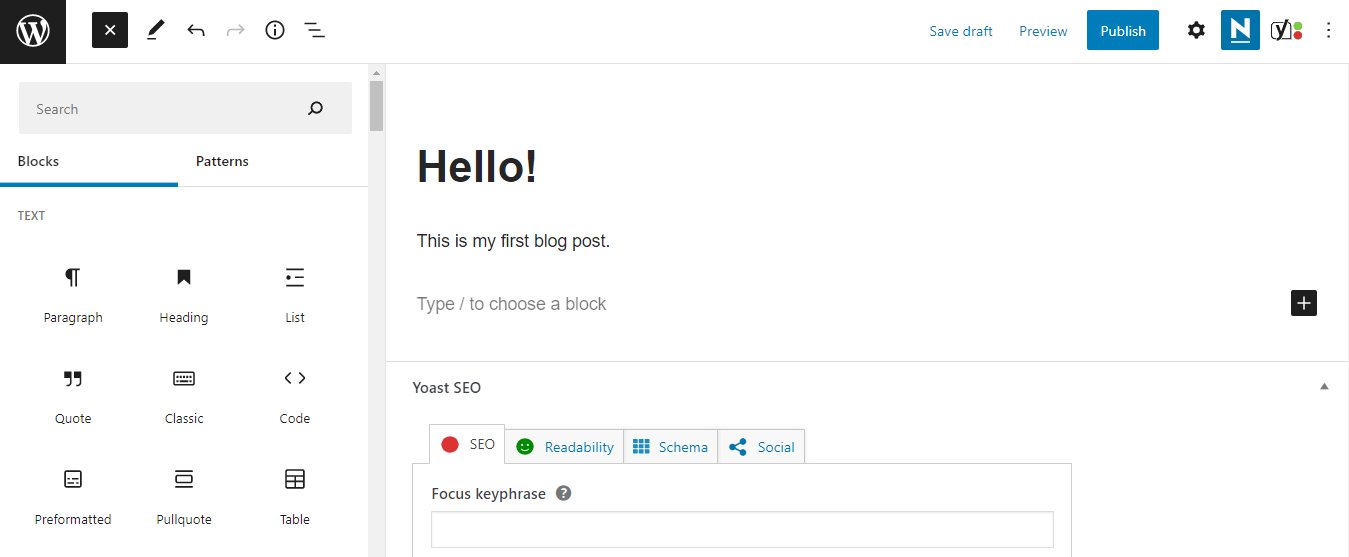
For every block, you’ll get some customization options. For instance, if you select the Paragraph block, you can change the color and font of your text:
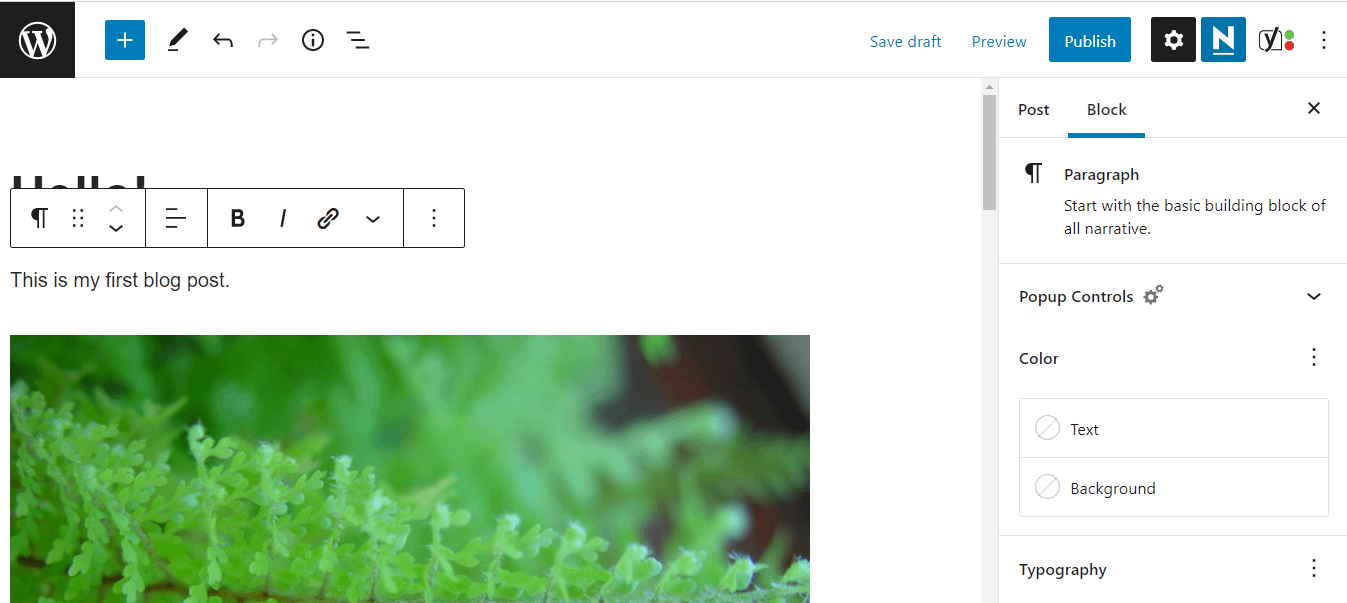
When you click on an image, you have the option to add a caption, write alt text, change the size, and more:
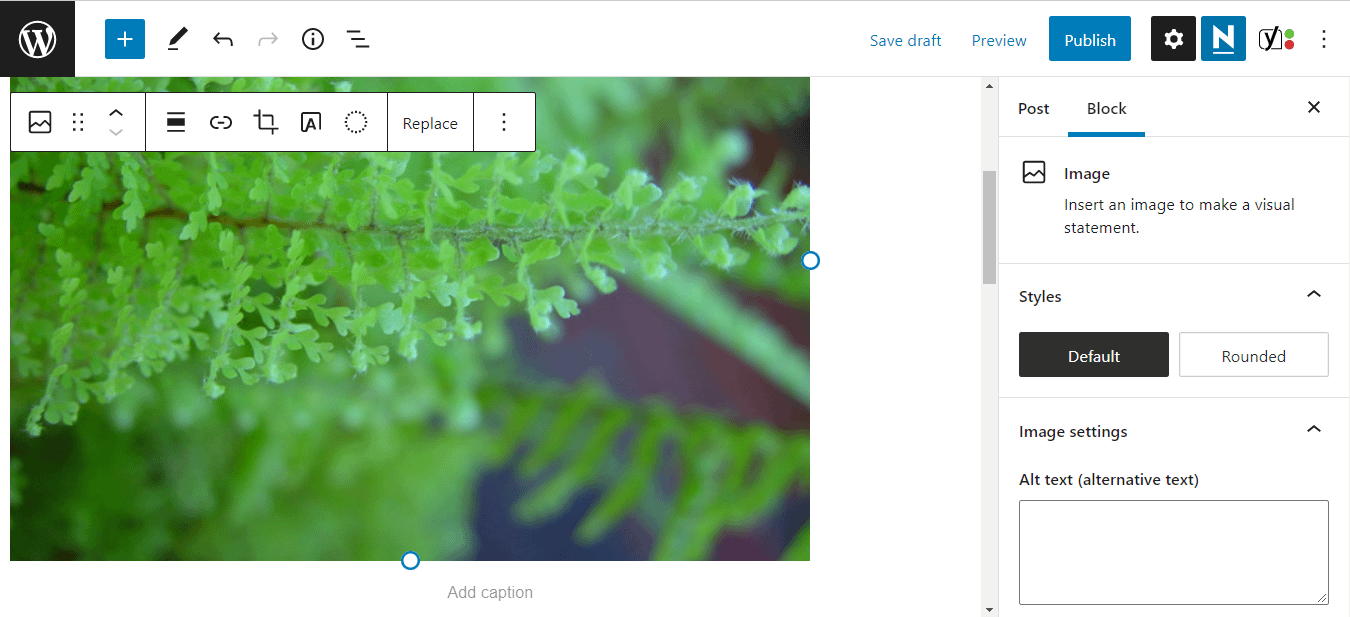
Feel free to experiment with different blocks. We recommend adding elements such as lists, quotes, and headers to make your posts more digestible.
You’ll also need to optimize your post to rank for relevant search terms. A great way to do that is to install the free Yoast SEO plugin. This beginner-friendly tool helps you write effective meta descriptions and SEO titles for your posts.
If you enter your selected keyword for your post, Yoast SEO will give you suggestions on how to optimize your post for that search term:
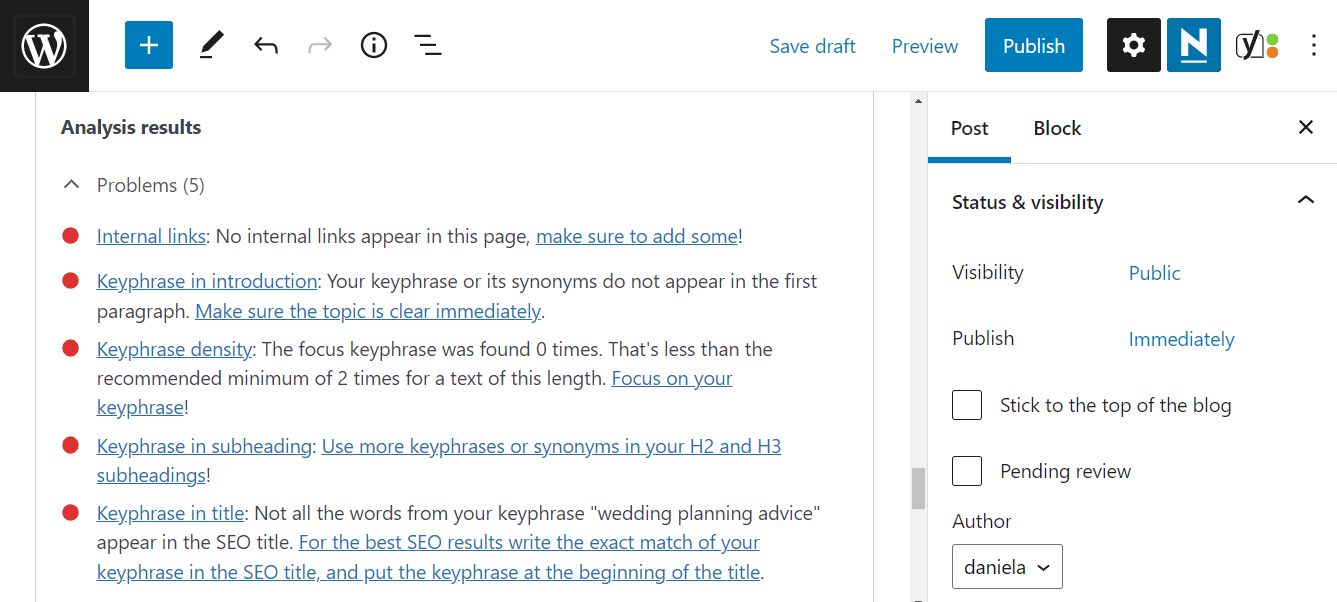
It also highlights problems with your post. For example, Yoast will let you know if your target keyword is missing from your headings, slug, and SEO title.
In the Settings panel, you can select a category and add tags to your blog post:
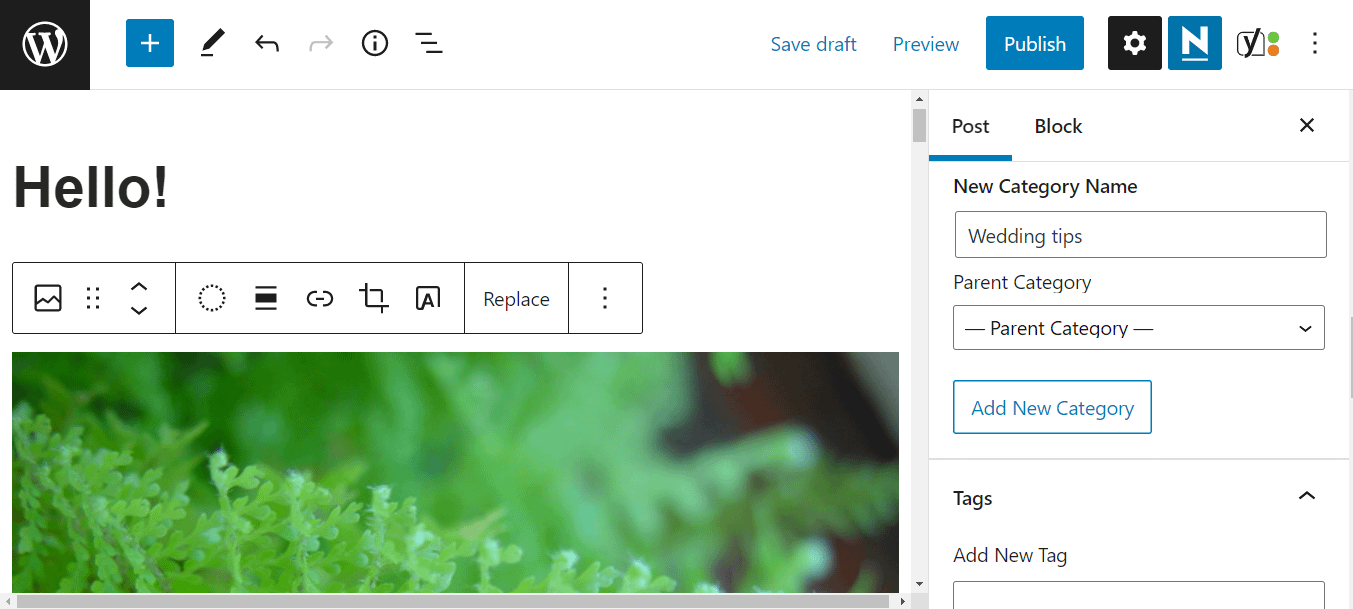
These taxonomies help you organize your content and enable readers to navigate your posts more easily. You might also add a featured image and excerpt. Depending on your theme, these elements typically appear in your blog feed and give readers an idea of what the post is about.
When you’re ready, go ahead and hit Publish! If you have a social media account, you can now share your new post on that channel to generate more traffic.
Conclusion
There are several benefits of blogging for small businesses. Regularly publishing informative and optimized posts can increase your visibility in search engines, build authority in your niche, and generate more leads.
To recap, here’s how to start a blog 🏁 for your small business:
Do you have any questions about blogging for small businesses? Let us know in the comments section below!
The post Blogging for Small Businesses: How to Get Started (In 3 Steps) appeared first on BloggingPro.
[ad_2]
Source link
